
CONTENTS


HANDICRAFTS homemade and personal!


The term handicrafts can sound both pretentious and a bit old-fashioned, but we think it represents something really wonderful, something thats been made by handa craftsmanship that needs to be preserved. Through this book, we want to inspire you to create your own crafts. We consider handicrafts to be something that you make with your own two hands, either for your own enjoyment or as a gift for loved ones. Materials for handicrafts can vary. We have chosen to work with five specific types, all featured in their own chapter: fabric, wood, yarn, paper, and, last but not least, concrete. We have created items based on our own interests and put together layouts and interior designs that we hope will awaken the creativity within you.
We cast Easter eggs from concrete, crochet necklaces and bunting with yarn, and in the chapter on fabrics, our old vintage fabrics are featured as both a pouf and a lampshade. The garden bench where we grow things was made from an old mullioned window, and the towels in our bathroom are hung on a ladder made from branches. Old wallpaper can be used to cover bricks, cans, or vases. Well also show you what you can do with a few pages from a secondhand book or an old rug. We really hope you will enjoy modern, upcycled handicrafts! Susanna & Sania PS We want to take the opportunity to thank ALL our readers, those of you who buy, read, or borrow our books. You let yourself be inspired by our ideas, you follow our blog, and you like what we do, and for that we want to give you a big THANK YOU!  FABRIC
FABRIC 
 We almost exclusively use vintage fabric when we work.
We almost exclusively use vintage fabric when we work.
Old comforters from the seventies are like gold to us, and we create new pillows, dresses, and curtains from them, or dress a lampshade in strips torn from a sheet. We love when the edges fray and it looks a bit worn. Kitchen towels and prettily embroidered tablecloths can also be put to good use. An antique sewing machine and old wooden spools are charming details that we leave out on display. 
 VINTAGE CUSHIONS These cushions are made from duvet covers from the seventies, and to our thinking, this is as good as it gets. In the photograph on the previous page you can see many other lovely things made from fabric, such as a dress, a seat, and several pillows.
VINTAGE CUSHIONS These cushions are made from duvet covers from the seventies, and to our thinking, this is as good as it gets. In the photograph on the previous page you can see many other lovely things made from fabric, such as a dress, a seat, and several pillows.
There is also a patchwork quilt made by someone else. A simple way to make a cushion cover is to sew it as you would a pillowcase, which means you need neither a zipper nor any buttons. Measure the pillow. Here we are using a pillow that measures 23 (60 cm) in length and 20 (50 cm) in width. Cut the material so it measures 57 (145 cm) long and 20 (50 cm) wide, adding another (1.5 cm) seam allowance all around. Hem the short ends.
Fold the material in half, right sides together, but leave 10 (25 cm), which is then folded back. This piece will then be facing right side up. Pin the long ends together. Sew the long ends together. Look at a regular pillowcase to see how its made. 
 PHOTO TO THE RIGHT: The armchair was a bargain we found online.
PHOTO TO THE RIGHT: The armchair was a bargain we found online.
We wrapped the armrests in fabric strips. WRAP The living room is decorated with gorgeous natural fabrics in rich patterns and colors. Our goal was to draw attention to the materials usedwood, flax, and burlapand create a visually appealing color scheme. A fun detail that was easy to make is the armrest on the chair, which we wrapped in strips of fabric. The chair was a great bargain online, and it looks just at home in the room. The green plant, a cluster of flowers, and a few splashes of color just enhance the overall feel.
Tear a piece of cotton material into 1 (2 cm) wide strips. Attach one of the ends to the armrest with a bit of glue. Wrap the strips as far down the armrest as you want and secure the end with some glue.  We decorated one of our Swedish cookbooks with the Swedish word for food. A COVERED COOKBOOK Upcycle a cookbook by dressing it in fabric. It looks like art when left lying around and also makes a unique gift.
We decorated one of our Swedish cookbooks with the Swedish word for food. A COVERED COOKBOOK Upcycle a cookbook by dressing it in fabric. It looks like art when left lying around and also makes a unique gift.
Cut the fabric to size, making sure you have an additional inch on each side. This allows you to fold the material around the edges of the cover. Print out large block letters on printer paper. Cut out the letters to make templates, place them on the back of another sheet of fabric, and trace them. Make sure the letters are placed according to their mirror imagefacing the other direction. Cut out the fabric letters.
Pin them to the fabric. Sew them onto the fabric using a zigzag seam. Use glue or Scotch tape to attach the fabric to the cover. Fold in the edges and attach these as well. SLEEP TIGHT A cozy place to rest your head. This bed, made with a mixture of old sheets, is guaranteed to give you a peaceful nights rest and keep the bedbugs from biting.
We used a rose-patterned sheet and a neutral-colored duvet. The pillowcase is decorated with embroidery we made on a sewing machine, and the nightstand was created by turning a basket upside down. Sew the pillowcase yourself and embroider it with a sewing machine. Many modern machines have decorative stitching. We made pillowcases from a natural linen fabric and decorated them with a pretty border in a contrasting color. 


Next page
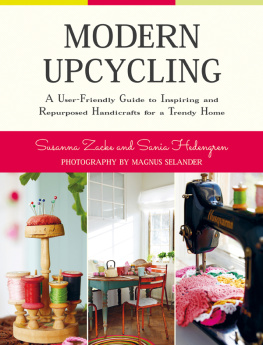
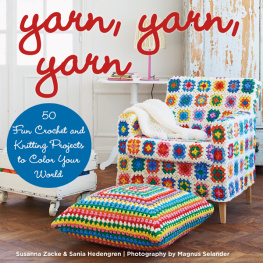
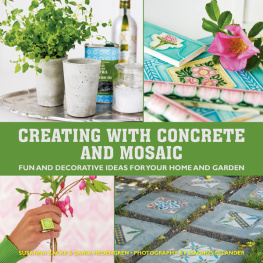
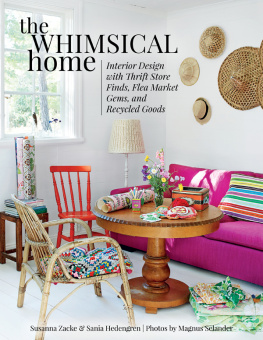
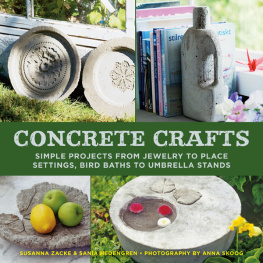
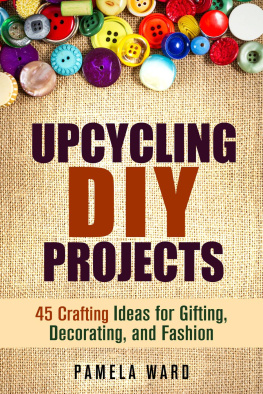

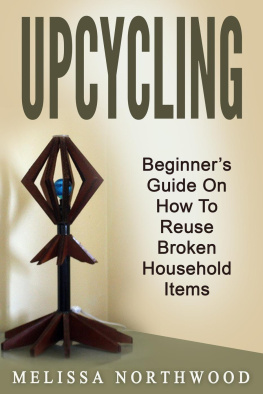

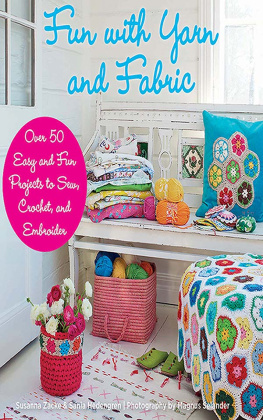
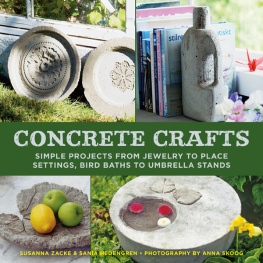
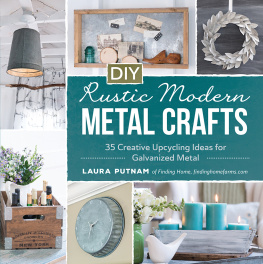
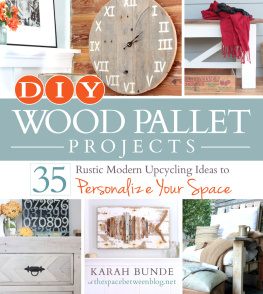



 HANDICRAFTS homemade and personal!
HANDICRAFTS homemade and personal! 
 The term handicrafts can sound both pretentious and a bit old-fashioned, but we think it represents something really wonderful, something thats been made by handa craftsmanship that needs to be preserved. Through this book, we want to inspire you to create your own crafts. We consider handicrafts to be something that you make with your own two hands, either for your own enjoyment or as a gift for loved ones. Materials for handicrafts can vary. We have chosen to work with five specific types, all featured in their own chapter: fabric, wood, yarn, paper, and, last but not least, concrete. We have created items based on our own interests and put together layouts and interior designs that we hope will awaken the creativity within you.
The term handicrafts can sound both pretentious and a bit old-fashioned, but we think it represents something really wonderful, something thats been made by handa craftsmanship that needs to be preserved. Through this book, we want to inspire you to create your own crafts. We consider handicrafts to be something that you make with your own two hands, either for your own enjoyment or as a gift for loved ones. Materials for handicrafts can vary. We have chosen to work with five specific types, all featured in their own chapter: fabric, wood, yarn, paper, and, last but not least, concrete. We have created items based on our own interests and put together layouts and interior designs that we hope will awaken the creativity within you.  FABRIC
FABRIC 
 We almost exclusively use vintage fabric when we work.
We almost exclusively use vintage fabric when we work.
 VINTAGE CUSHIONS These cushions are made from duvet covers from the seventies, and to our thinking, this is as good as it gets. In the photograph on the previous page you can see many other lovely things made from fabric, such as a dress, a seat, and several pillows.
VINTAGE CUSHIONS These cushions are made from duvet covers from the seventies, and to our thinking, this is as good as it gets. In the photograph on the previous page you can see many other lovely things made from fabric, such as a dress, a seat, and several pillows.
 PHOTO TO THE RIGHT: The armchair was a bargain we found online.
PHOTO TO THE RIGHT: The armchair was a bargain we found online. We decorated one of our Swedish cookbooks with the Swedish word for food. A COVERED COOKBOOK Upcycle a cookbook by dressing it in fabric. It looks like art when left lying around and also makes a unique gift.
We decorated one of our Swedish cookbooks with the Swedish word for food. A COVERED COOKBOOK Upcycle a cookbook by dressing it in fabric. It looks like art when left lying around and also makes a unique gift.

